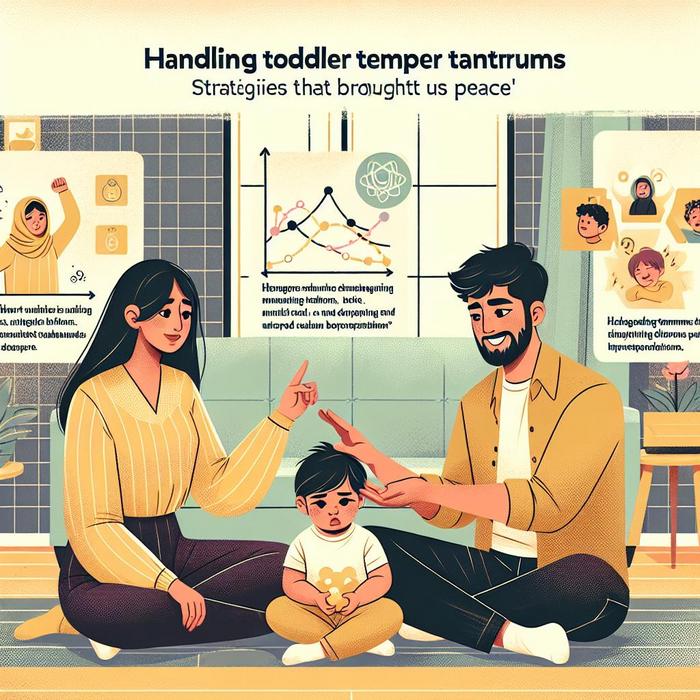Decoding the Mystery of Toddler Tantrums
If you are a parent, you will have experienced the dreaded temper tantrums that seem to be part and parcel of toddlerhood. These episodes can be overwhelming and downright embarrassing, particularly when they occur in public places. Understanding why they happen and learning key strategies for managing tantrums can transform these challenging moments into opportunities for growth and connection for both you and your child.
Understanding the Root Cause of Tantrums
The first step towards managing tantrums is understanding what triggers them. Toddlers are at a stage where their vocabulary is limited, and they cannot express their feelings or needs as effectively as they would like. This inability to communicate effectively, coupled with a strong desire for independence, can result in a frustrating meltdown, or what we know as a tantrum.
Cultivating Positive Discipline
Positive discipline is an effective way of dealing with tantrums that can also help in fostering a strong and loving parent-child relationship. It focuses on understanding the child’s emotions and needs, promoting good behavior instead of punishing the bad, and setting clear yet reasonable boundaries.
- Redirect Attention: Toddlers have a short attention span. Sometimes, simply distracting them can shift their focus away from the source of frustration, effectively averting a tantrum.
- Offer Choices: Toddlers seek autonomy. By presenting them with choices, you are allowing them some control over their environment, thus reducing the chance of a tantrum.
- Emphasize Empathy: Acknowledge their emotions and empathize with their feelings. Your understanding can help calm and soothe them.
Calming Techniques to Diffuse Meltdowns
Even with the best prevention strategies, tantrums are inevitable. Here are a few calming techniques to help diffuse the situation:
- Stay Calm: Your child looks to you for guidance. Maintaining your composure during their tantrums can help them restore their own calm.
- Use Gentle Touch: A warm hug or a gentle stroke of their back can reassure your child that despite their outburst, they are safe and loved.
- Practice Deep Breathing: Show your toddler how to take deep breaths during their meltdown. This encourages them to focus on their breathing, which can help them calm down.
Understanding Behavior Patterns
Each child is unique, and so are their tantrums. Paying attention to your child’s behavior patterns can help you predict potential tantrums and intervene before they escalate. Are they likely to throw a tantrum when they are tired, hungry, or overwhelmed? Understanding these patterns makes it easier to manage and prevent future tantrums.
As parents, we also need to be aware of the impact of our own behavior and responses. Our reactions can either escalate or mitigate a tantrum. Creating a happy and stimulating environment for your baby where they feel safe and understood can go a long way in managing tantrums effectively.
Remember, It’s a Phase
Finally, remember that tantrums are a normal part of toddlerhood and a critical stage in your child’s emotional development. With patience, understanding, and the right strategies, you can navigate these challenging episodes. You’re not alone in your journey – the Bottle Wizard community is here to share in your experiences and offer guidance along the way.
Stay tuned as we explore more about toddler tantrums and discuss other strategies that can help maintain peace at home…
Learning to Recognize Signs of Stress in Your Toddler
Another important component in successful tantrum management is recognizing signs of stress in your toddler. Often, what we perceive as “bad behavior” is actually an expression of underlying stress or discomfort. Toddlers might show symptoms of stress in a variety of ways like refusal to cooperate, excessive crying, sleep disturbances, physical aggression, or even banging their head on walls, as listed on Peaceful Parent Happy Kids.
- Physical signs: Unexplained stomach aches or headaches, frequent sickness, changes in eating habits, bedwetting after being potty trained.
- Behavioral signs: Increased clinginess, withdrawal from loved ones, hostile or aggressive behavior, diminished enthusiasm about previously enjoyed activities.
- Emotional signs: Excessive crying, heightened irritability, frequent bouts of worry or sadness, trouble concentrating.
Mindful Techniques to Connect with Your Toddler
Establishing a strong emotional connection with your toddler not only strengthens your bond but also reduces the frequency and intensity of tantrums. A strong connection provides a secure foundation for your child’s emotional development and lays the foundation for conflict resolution.
- Active Listening: Show genuine interest in your toddler’s experiences. Make eye contact, use affirming nods and encouraging words, and summarize your understanding of what they’re communicating.
- Validate Feelings: Whatever your child is feeling is real. Rather than dismissing it as “childish” or unnecessary, validate it. This doesn’t mean giving into every demand but acknowledging the feelings behind it.
- Spend Time Together: Bonding activities like playing, reading, crafting are proactive ways to connect with your child. The more connected a child feels, the less likely they are to act out.
Involving Mental Health Professionals
While you can effectively manage most tantrums on your own, occasionally, some situations could benefit from professional help. If your toddler’s tantrums are constantly intense, last longer than you think they should, are causing distress or harm to your child or others, or if your toddler is unable to recover from tantrums, it could be beneficial to involve a mental health professional.
With training and professional expertise, mental health professionals can share evidence-based techniques such as behavioural therapies, positive parenting strategies, and relaxation techniques. They can help guide parents through the process of bringing about behavioural change in their toddler.
Embracing Patience and Empathy as a Parent
As a parent, the most important thing is to stay patient and empathetic towards your child, during their tantrums. There are no instant fixes, no magic words that can immediately end a tantrum. It’s a stage every child goes through, learning to manage their emotions. Experts at Ammatoday advise parents to remind themselves that it’s a phase, it will pass, and the journey, although challenging, is worthwhile.
In some cases, a different, more soothing approach may be necessary. The Jai Institute for Parenting advocates for peace, empathy, and connection as the roots of healthy parenting. Understanding that your toddler is not ‘out to get you’, but is genuinely struggling with the world around them, can help in fostering this empathy.







